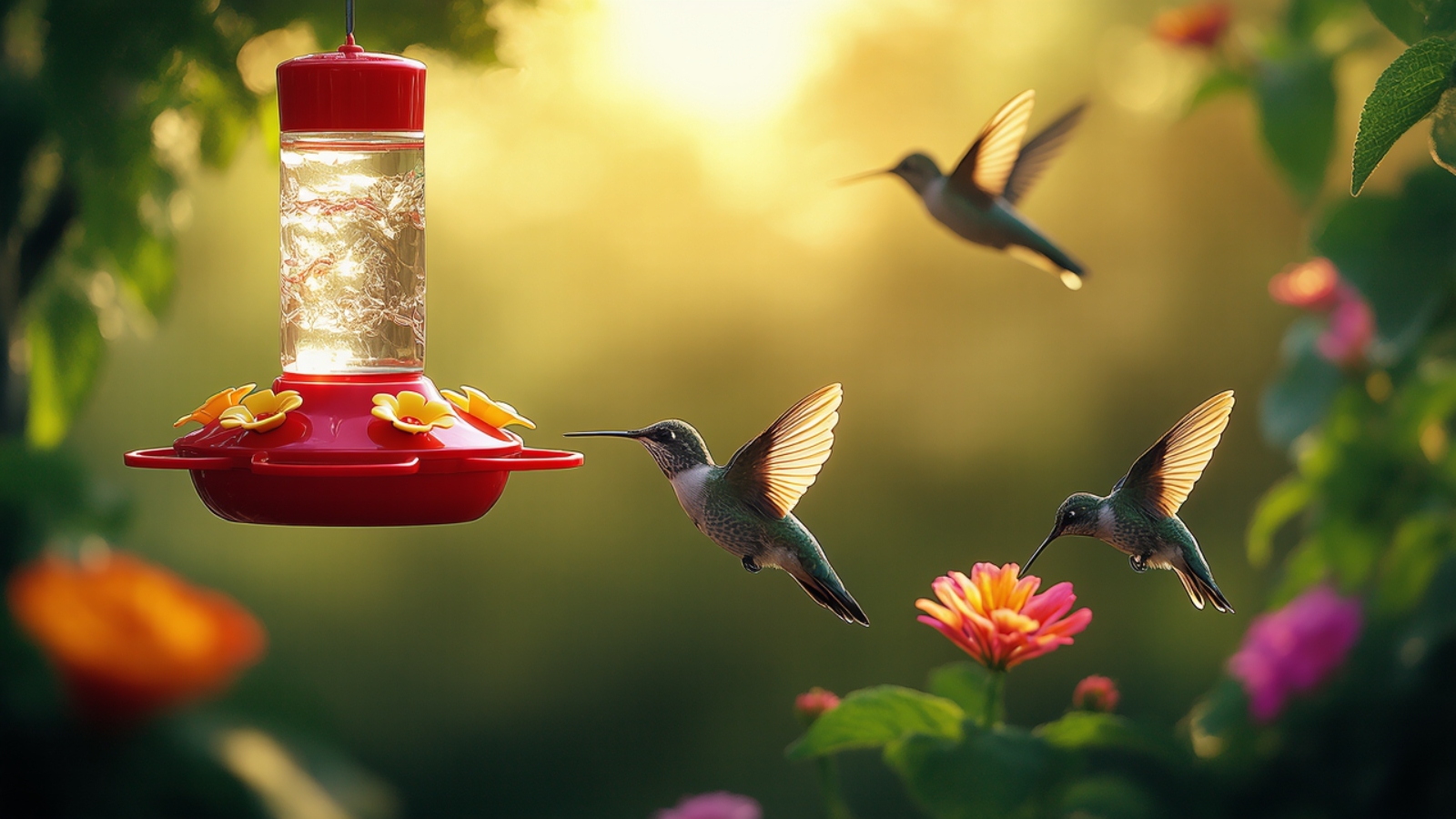Hummingbirds are some of the most fascinating creatures in nature. Their vibrant colours, rapid wingbeats, and ability to hover make them a joy to watch.
While many people rely on sugar water feeders to attract these tiny birds, there’s a better, more natural way to bring them to your garden: native plants.
These plants not only provide the nectar hummingbirds crave but also support local ecosystems, making them a win-win for both wildlife and the environment.
In this blog post, we’ll explore three native plants that are more effective at attracting hummingbirds than sugar water. These plants are not only beautiful but also provide the nutrition and habitat hummingbirds need to thrive. Let’s get started!
Key Takeaways
- Native plants like cardinal flower, bee balm, and coral honeysuckle are excellent for attracting hummingbirds naturally.
- These plants provide better nutrition and support local ecosystems compared to sugar water feeders.
Related post: Are All Hummingbirds Colourful?
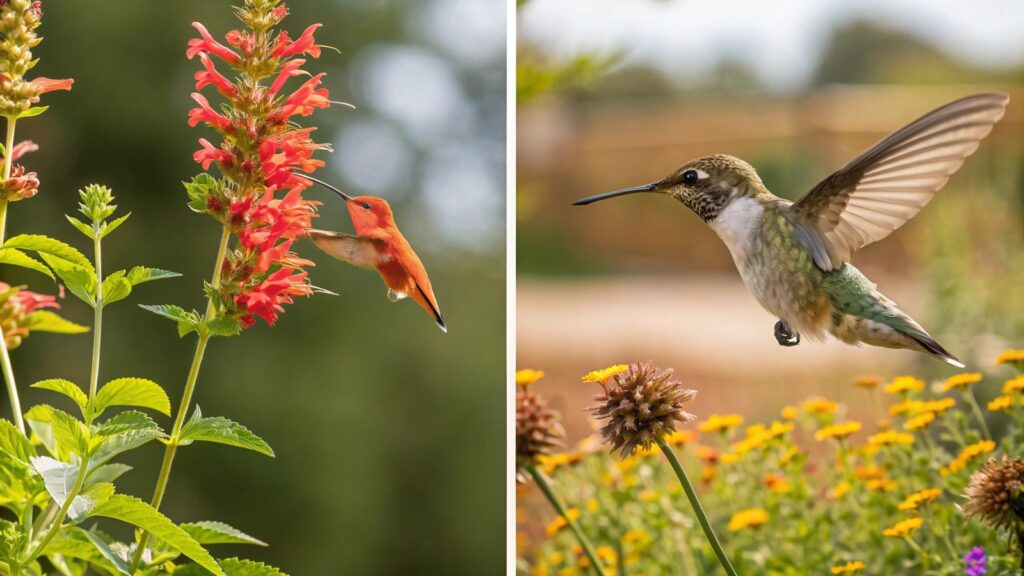
Why Native Plants Are Better Than Sugar Water for Hummingbirds
Hummingbirds are naturally drawn to flowers with tubular shapes and bright colours, especially red, orange, and pink. While sugar water feeders can mimic the sweetness of nectar, they lack the essential nutrients found in natural sources. Native plants, on the other hand, offer a complete package: nectar, shelter, and even insects for protein.
By planting native species, you’re not just feeding hummingbirds; you’re creating a mini-ecosystem that benefits other pollinators and wildlife. Plus, native plants are often easier to maintain since they’re adapted to your local climate and soil conditions.
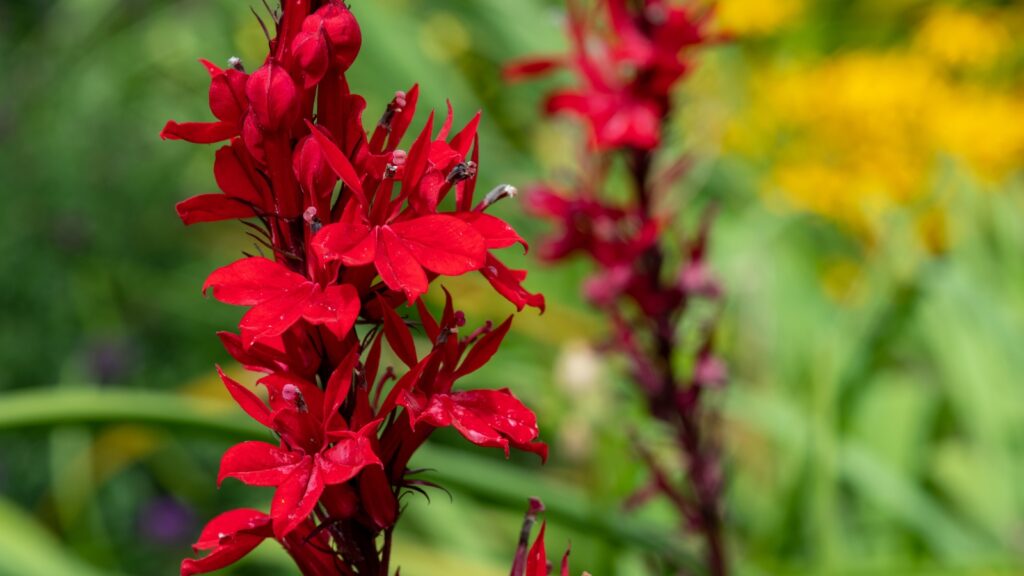
1. Cardinal Flower (Lobelia cardinalis)
The cardinal flower is a showstopper in any garden. Its bright red, tubular flowers are like a magnet for hummingbirds. This perennial plant is native to North America and thrives in moist, well-drained soil. It blooms from mid to late summer, providing a reliable nectar source during the warmer months.
Why Hummingbirds Love It:
- The tubular shape of the flowers is perfect for their long beaks.
- The bright red colour is highly attractive to hummingbirds.
- It produces abundant nectar, making it a favourite feeding spot.
Growing Tips:
- Plant in partial shade to full sun.
- Keep the soil consistently moist, as this plant prefers wet conditions.
- Deadhead spent flowers to encourage more blooms.
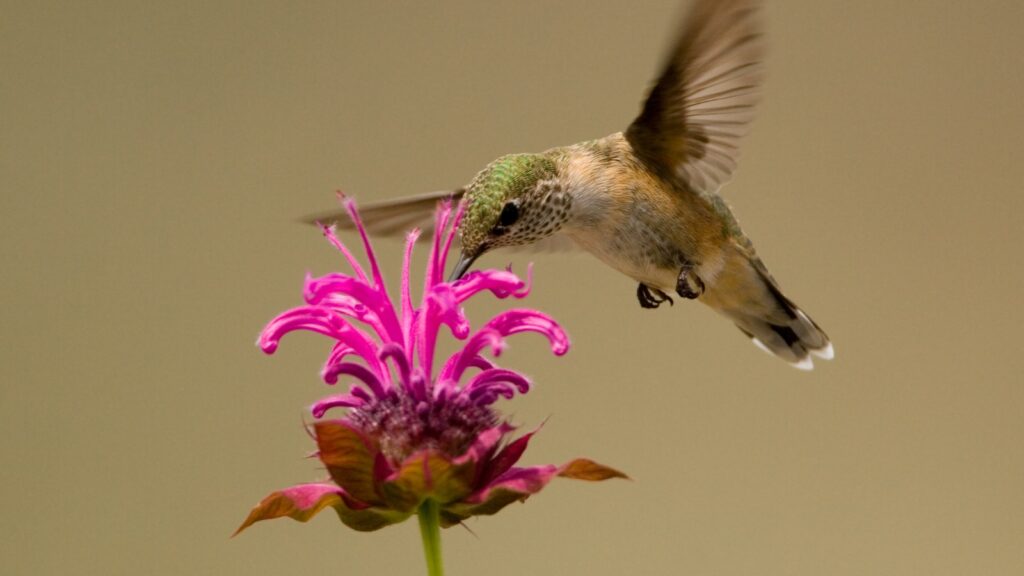
2. Bee Balm (Monarda didyma)
Bee balm, also known as scarlet bee balm, is another hummingbird favourite. This perennial wildflower produces clusters of red, pink, or purple tubular flowers that are rich in nectar. It’s not just hummingbirds that love bee balm—bees and butterflies are frequent visitors too.
Why Hummingbirds Love It:
- The flowers are packed with nectar, providing a high-energy food source.
- Its bright colours and tubular shape are irresistible to hummingbirds.
- It blooms throughout the summer, offering a long feeding season.
Growing Tips:
- Plant in full sun for the best blooms.
- Ensure the soil is well-drained but moist.
- Divide the plants every few years to keep them healthy and vigorous.
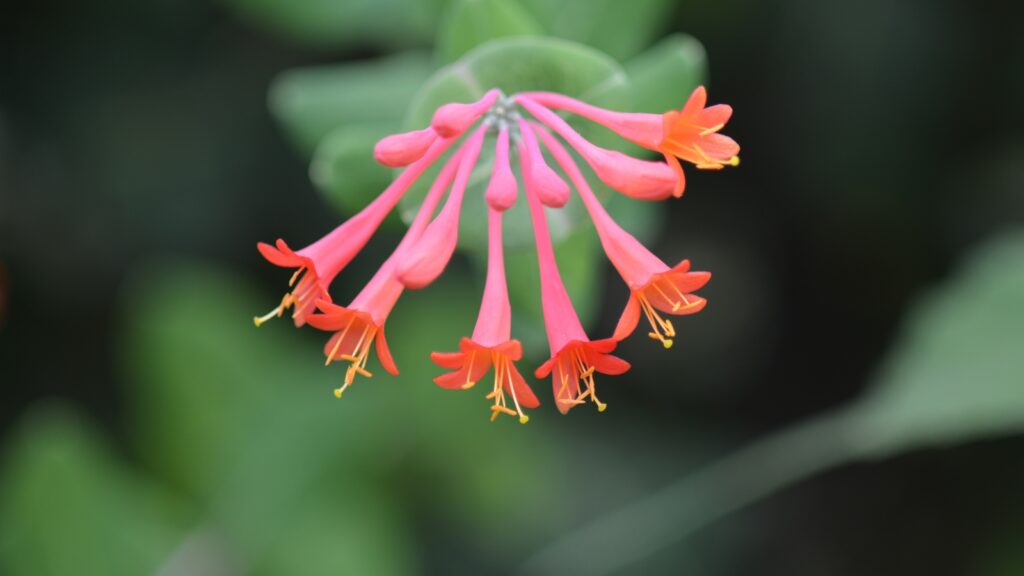
3. Coral Honeysuckle (Lonicera sempervirens)
Coral honeysuckle is a native vine that produces stunning red or coral-coloured trumpet-shaped flowers. Unlike invasive honeysuckle species, this plant is non-invasive and supports local wildlife. It blooms from spring to summer, providing a consistent nectar source for hummingbirds.
Why Hummingbirds Love It:
- The trumpet-shaped flowers are ideal for their feeding style.
- It blooms for an extended period, ensuring a steady food supply.
- The plant also attracts insects, which hummingbirds eat for protein.
Growing Tips:
- Plant in full sun to partial shade.
- Provide a trellis or support for the vine to climb.
- Prune after flowering to maintain its shape and encourage new growth.
Native Plants vs Sugar Water Feeders
| Feature | Native Plants | Sugar Water Feeders |
|---|---|---|
| Nutritional Value | Provides nectar, nutrients, and insects | Only offers sugar water |
| Environmental Impact | Supports local ecosystems | Requires regular cleaning and maintenance |
| Maintenance | Low (once established) | High (needs frequent refilling and cleaning) |
| Attractiveness | Natural beauty and habitat | Artificial and limited to feeders |
How to Create a Hummingbird-Friendly Garden
If you’re ready to attract more hummingbirds to your garden, here are some tips to get started:
- Choose Native Plants: Focus on species that are native to your region, as they’re better suited to local conditions.
- Plant in Clusters: Group similar plants together to create a more noticeable feeding area.
- Provide Water: Hummingbirds love shallow water features for drinking and bathing.
- Avoid Pesticides: Chemicals can harm both hummingbirds and the insects they feed on.
- Add Perches: Include small trees or shrubs where hummingbirds can rest between feedings.
Final Thoughts
Attracting hummingbirds to your garden doesn’t have to rely on sugar-water feeders. By planting native species like cardinal flower, bee balm, and coral honeysuckle, you can create a natural haven for these incredible birds.
Not only will your garden come alive with their presence, but you’ll also be supporting a healthier ecosystem.
So, why not start planting today? Your garden and the hummingbirds will thank you!
Frequently Asked Questions
Why are native plants better than sugar-water feeders?
Native plants provide a more balanced diet for hummingbirds, including nectar, nutrients, and insects. They also support local ecosystems and require less maintenance than feeders.
Can I grow these plants in containers?
Yes, many native plants like bee balm and cardinal flower can be grown in large containers. Just ensure they have enough space and proper soil conditions.
How do I attract hummingbirds if I don’t have a garden?
If you don’t have outdoor space, consider hanging potted plants like fuchsias or petunias on a balcony. These flowers also attract hummingbirds.
